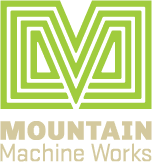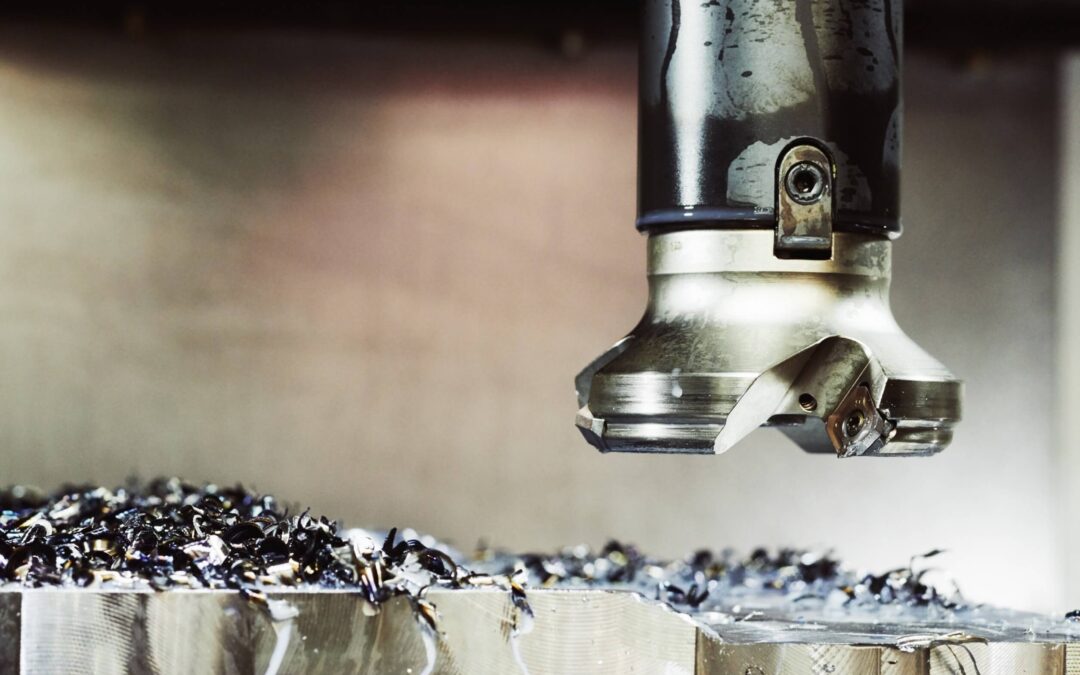CNC milling is a precise machining process that can be used to create parts and products from a variety of metals. In order to select the right metal for CNC milling, manufacturers must consider a number of factors, including the desired properties of the final product, the intended use of the product, and the required tolerances. This comprehensive guide will explore the different types of metals that can be CNC milled, their benefits and drawbacks, best design practices and some tips for selecting the right metal for your project.
What is CNC milling?
CNC milling is a widely-used manufacturing process that utilizes computer numerical control (CNC) technology to precisely cut and shape materials such as metal, plastic, and wood. The CNC milling machine can carve and create components with flat surfaces, angular faces, slots, pockets, threads and patterns by rapidly rotating cutting tools with extreme precision. This technology enables designs to be crafted in almost any three dimensional shape imaginable. Although CNC milling is usually an automated process, the operator’s input — including choosing the right cutting tool and setting up the correct parameters — is essential in determining the quality of the finished product.
How do CNC milling machines work?
CNC milling machines work by using computer numerical control to carry out automated precision cuts. A CNC milling machine consists of multiple tools that are attached to a rotating spindle, and can be programmed to move up, down and side-to-side in order to cut shapes from the material fed into the machine. Material is held firmly in place by a vice before being worked on by the rotary cutting tools, which are typically made from diamond or titanium. CNC mills also employ lasers or etching technologies in order to core out fine details in materials such as metal or wood. The power used is determined by the material being worked on and can range from low speed drilling operations all the way up to high speed cuts for greater accuracy. As well as being able to create complex shapes, CNC milling machines have several additional advantages such as repeatable precision, reduced setup times and minimal waste generation when compared with traditional machining techniques.
What kind of parts can be made with CNC milling machines?
CNC milling machines are widely used for creating precision-made parts of all shapes and sizes with a wide variety of materials. From custom switches and casings to aerospace components, contemporary art installations, medical devices and virtually any three-dimensional part with intricate contours, CNC milling is essential to modern industry. CNC milling machines are designed with a powerful spindle that rotates cutting tools at exceptionally high speeds while the part itself is securely held in place. This process yields extremely accurate results, producing intricate parts with impeccable detail and high degrees of repeatability.
What types of metal can be used in CNC milling?
CNC milling is often used to produce precision parts from large varieties of materials, including:
- Aluminum: Advantages of aluminum include excellent machinability and light weight. Disadvantages include a higher cost compared to other metals.
- Steel: Steel offers superior strength and rigidity but is more difficult to machine.
- Stainless steel: This metal has excellent corrosion resistance, making it ideal for parts that will be exposed to harsh environments.
- Titanium: Titanium is a lightweight metal with superior strength and corrosion resistance, making it an ideal choice for aerospace and defense components.
- Copper alloys: Used in electrical components due to their conductive properties.
- Brass: Brass offers high strength and corrosion resistance while being easy to machine.
- Plastic: Plastics can be machined with CNC milling machines, offering the advantage of being lightweight, durable and cost-effective.
- Wood: Wood is a versatile material that can be machined easily with CNC milling machines, making it ideal for furniture, cabinetry and art installations.
- Composite materials: Composite materials are made up of two or more component materials and offer increased strength and corrosion resistance over traditional metals. They are often used in aerospace applications.
- Carbon fiber: Extremely light and strong, carbon fiber is often used in the manufacturing of racing parts and aerospace components.
- Copper: Copper is a strong and corrosion-resistant metal that has excellent electrical conductivity. It is often used in the production of electrical components.
- Tungsten: Tungsten offers superior strength and hardness, making it an ideal choice for applications requiring wear resistance.
- Graphite: Graphite is a lightweight material with low friction properties which makes it ideal for use in a variety of applications.
- Ceramics: Ceramics can be used to produce highly intricate components with superior wear resistance and heat dissipation. They are often used in medical devices, turbines and fuel injectors.
- Glass: Glass is an optically clear material that offers excellent transparency and can be machined to tight tolerances. It is often used in the production of optical components.
Factors to consider before selecting a metal for your project
When selecting the perfect metal for your project, there are several important factors to consider.
- Strength: The strength of the metal will determine how well it can handle pressure and compression.
- Corrosion resistance: If the parts are to be exposed to harsh environments, then corrosion resistance should be a priority.
- Machinability: Some metals are easier to machine than others, so machinability should also be taken into account.
- Cost: The cost of the metal should be taken into consideration to ensure that it fits within your budget.
- Weight: The weight of the metal will affect the overall cost and performance of your project, so this should also be considered.
- Final application: The final application of the part will determine which material is best suited to your needs.
- Environmental or safety considerations: Some metals may require special safety or environmental considerations, so these should be taken into account when selecting a material.
- Availability: The availability of the metal can also be an important factor in your decision-making process.
What are the most popular metals for CNC machining?
Some of the most popular metals for CNC machining are aluminum, stainless steel, brass, and titanium. Aluminum is lightweight but still strong and durable, making it suitable for many applications. Stainless steel also has excellent durability but can become challenging to work with due to its hardness. Brass and other copper alloys provide good corrosion resistance and electrical conductivity that makes it a popular choice in electronics manufacturing. Lastly, titanium is extremely durable yet lightweight which allows engineers to create components with strength comparable to steel but half the weight. These four metals provide strong and reliable characteristics that make them preferred choices for CNC machining projects across multiple industries.
What are the best design practices for CNC milling?
CNC milling is a sophisticated form of machinery and requires some level of expertise to produce quality results. To aid you in getting the most out of your CNC milling experience, here are a few best design practices to consider following:
- Selecting the right tools: The right tools need to be chosen for different materials and applications.
- Creating a proper toolpath: A well-planned toolpath will ensure accuracy and efficiency while machining.
- Optimizing cutting parameters: Parameters like speed, feed rate, and depth of cut should be optimized for best results.
- Stock preparation: The correct type of stock should be selected and machined accurately to the desired shape.
- Clamping and fixture design: Fixtures should be designed properly to provide adequate support while machining.
- Tool selection: Different tools can be used for different operations and material types, so the right tool needs to be chosen accordingly.
- Tool life management: Tools should be managed and replaced as needed to ensure a quality finish.
Is CNC milling expensive?
CNC milling can be an expensive option for machining parts, but its benefits often outweigh the costs. The initial outlay for a CNC machine is considerable and requires periodic maintenance, replacement components and upgrades over time. But the accuracy of the parts produced through CNC milling, as well as its efficient automation capabilities make it a preferred option in many engineering and manufacturing sectors. The economic savings of using CNC milling rather than traditional machining techniques are documented in research studies, proving that this form of manufacturing can be cost-effective when done correctly. With the right implementation, you can get maximum value for your investment in CNC milling services.
How do you get the most out of CNC milling with Machine Mountain Works?
CNC milling with Machine Mountain Works can be a highly effective solution for a variety of fabrication needs. The team at Machine Mountain Works utilizes efficient 3-axis and 5-axis machines to produce high-precision parts faster and with more accuracy than ever before. By combining CNC software with advanced engineering expertise, Machine Mountain Works is able to maximize output and minimize wasted materials. In addition, the quick turnaround time associated with these processes ensures that customers receive the highest quality product in a timely manner. Therefore, when you trust your project to the professionals at Machine Mountain Works, you are getting maximum results from their CNC milling solutions.
Contact our experienced team today to learn more.

